SEO
9 Tactics to Increase Brand Awareness (Tried & Tested)
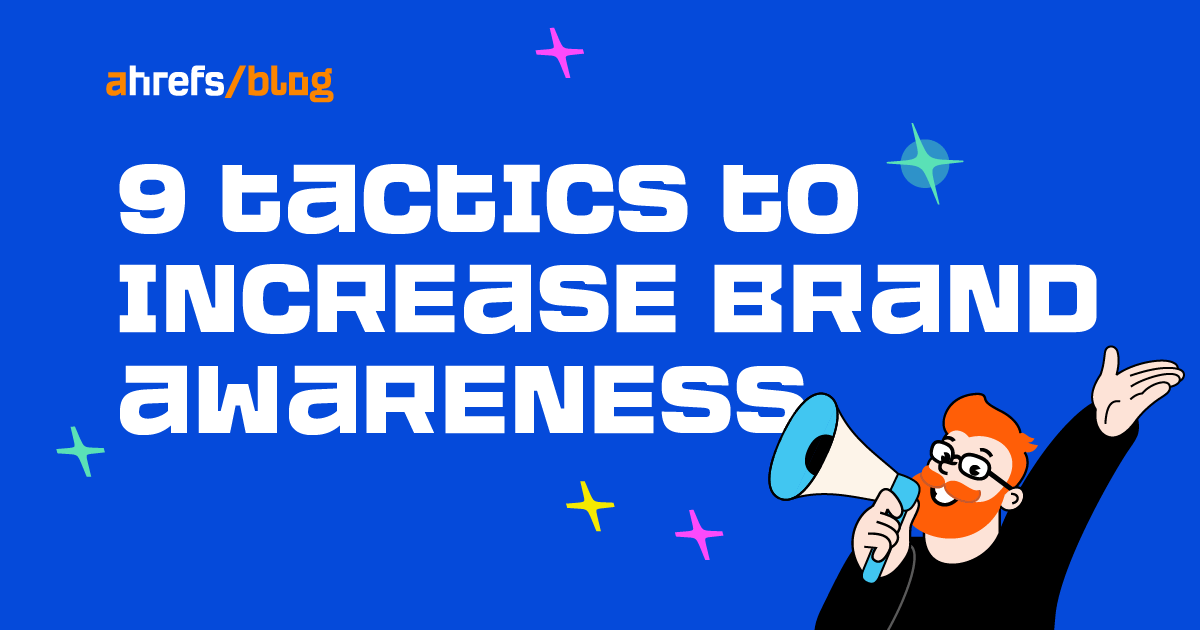
One of the best ways to make anyone buy from you is to make them aware of your brand and products before they even start considering the purchase.
Countless tactics can increase your brand awareness. Technically, any piece of your marketing communication can be the first time someone from your target audience hears about you. But we’ll focus only on what’s truly impactful here.
Let’s go through nine tried and tested ways to increase your brand awareness.
If people are searching for information surrounding your products (they most likely are), your website should be present in the search results.
The great thing about organic search traffic is that it’s one of the few channels with the potential to influence your target audience throughout the whole marketing funnel:

We’re naturally interested in the top of the funnel (ToFu) here, so you need to create the type of content people search for when they start getting information about the industry you’re in.

This is where keyword research comes into play.
Keyword research is the process of discovering valuable search queries that your target customers type into search engines like Google to look for products, services, and information.
You start with a keyword research tool like Ahrefs’ Keywords Explorer and plug in a few seed words that define your niche:

Next, head over to the Matching terms report to see all keywords containing the “seed” keywords from the input:
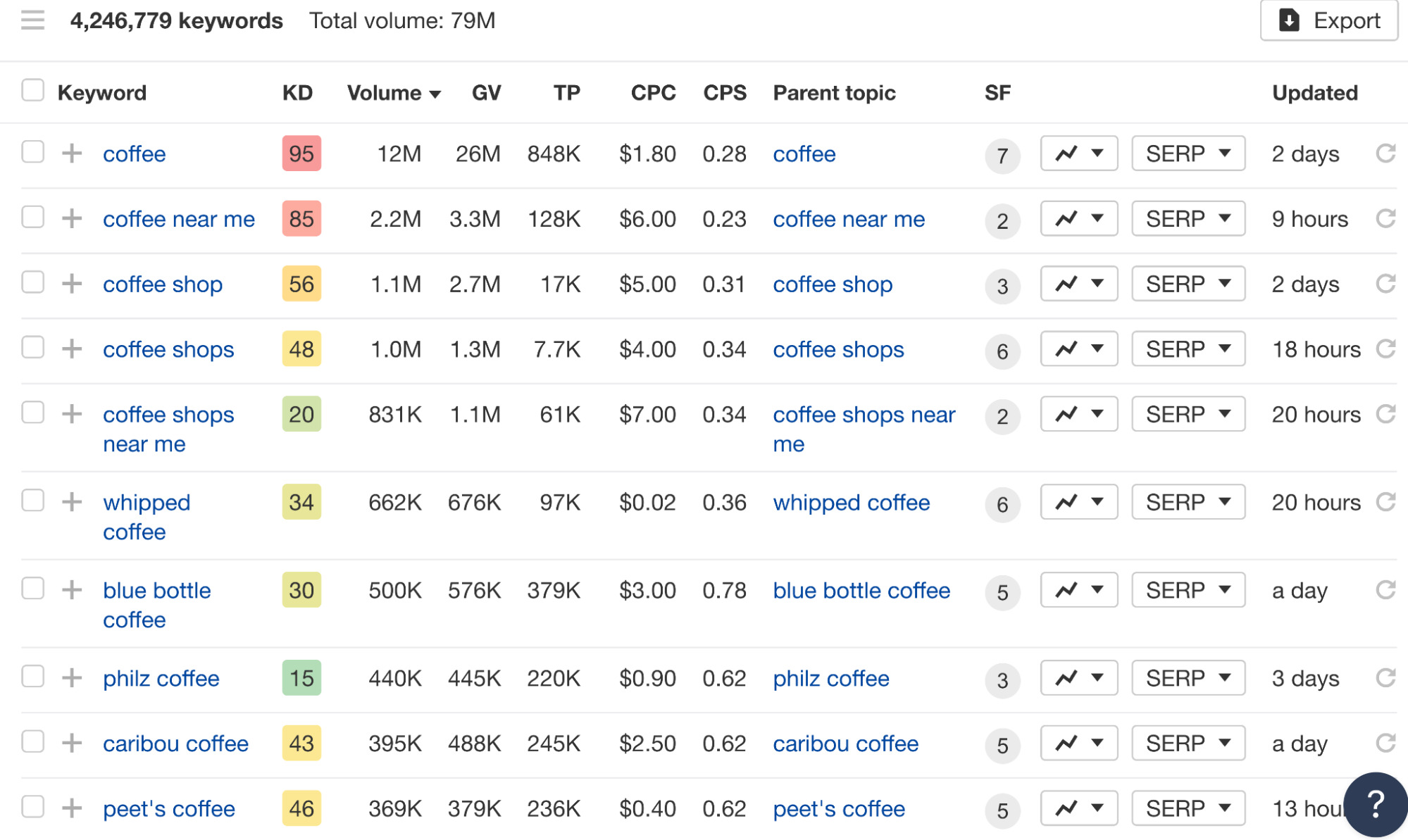
As you can see, over 4 million keywords contain those seed phrases. Now it’s all about filtering and choosing which keywords you’ll target with a great piece of content.
In this case, I’m going for keywords that:
- Have a maximum Keyword Difficulty (KD) of 40, so they shouldn’t be too difficult to rank for.
- Have a Traffic Potential (TP) of at least 500 clicks a month.
- Include terms that signal searchers are looking for the type of informational content we’re planning to create.
Voilá, I narrowed the list down to ~8,500 keywords:
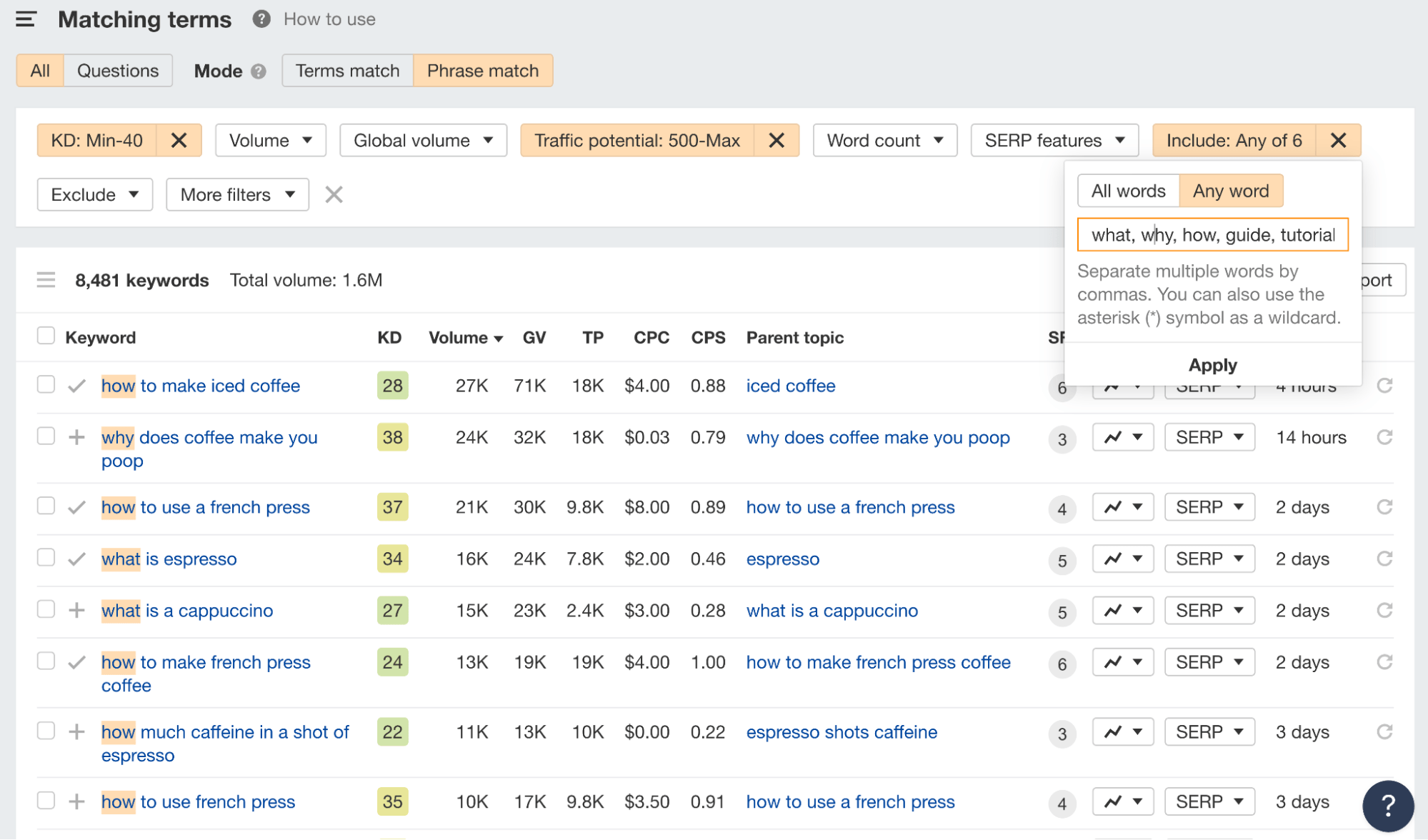
The last filter to apply here is common sense. Always think about how relevant the topic is to your brand. Can the potential visitor ever become your customer? For example, suppose you’re selling fancy equipment for making espressos. In that case, people looking up “what is espresso” aren’t likely to ever become your target audience.
Head on to the following guides to learn more about researching keywords and creating content:
The purpose of public relations is to positively influence how a brand is perceived. There’s no doubt that communications with the media and the general public should be in your arsenal for increasing brand awareness.
Getting started with PR can seem terrifying. Journalists are swamped with emails and topics they could write about. You must truly deserve the media attention.
But every writer needs expert contributions for their content once in a while. You can be that expert in your niche, and it’s a great way to get your foot in the door of the bigger PR game.
All you need to do is to subscribe to a feed of media inquiries via services like HARO, SourceBottle, or Terkel.
Here’s what one of these feeds looks like with HARO:

Your goal is to provide valuable information as fast as possible whenever you see a good opportunity.
The competition, especially on HARO, can be fierce. Here are a few tips to start off on the right foot:
- Only respond to requests where you or your colleagues are experts on that topic – Forget it if you don’t know your stuff.
- Stick to the requirements – Journalists sometimes require specific formats or information about your credentials.
- Try to provide the answer ASAP – You could subscribe to a premium HARO tier for $49/month to give you a head start before other users get the email feed.
- Check the publication’s authority and history – Some companies exploit the potential to get expert contributions easily, so you should be able to identify and ignore these.
Let’s expand on that last point a little. You should always know who you’re responding to so you can make sure the eventual coverage is worth the effort. That means ignoring anonymous inquiries and separating the wheat from the chaff.
If you’re unfamiliar with the company next to the inquiry, look up its website and review a few of its recent posts. Let’s take a look at a specific website example I just came across in the HARO feed:

What immediately catches my attention here is the large “listicle” post. Since journalists and bloggers tend to feature multiple, sometimes even tens of HARO contributors, you can look for patterns in the titles like a large listicle number or “shared by experts.”
In this case, the large listicle post wasn’t created from HARO contributions. The rest of the articles don’t look sourced from HARO either. You don’t want to see a significant number of posts that include these contributions, as it dilutes the benefits you get from the coverage and backlink to your website. This particular website gets a pass on the content-sourcing front.
Another way to assess how valuable the coverage could be is to look at the website’s backlink profile strength. Generally speaking, the more it’s linked to from authoritative websites (ideally in your niche), the more valuable the backlink is for you.
The website’s Domain Rating (DR) is a good proxy metric for this particular use, which you can see with Ahrefs’ SEO Toolbar.

Simply, the higher the DR, the better. As a rule of thumb for English websites, you can exclude anything below DR 50 unless the website looks relevant to your niche and the content is of high quality.
In all, 14,000 new customers in 2020 told us they learned about Ahrefs from their friends:
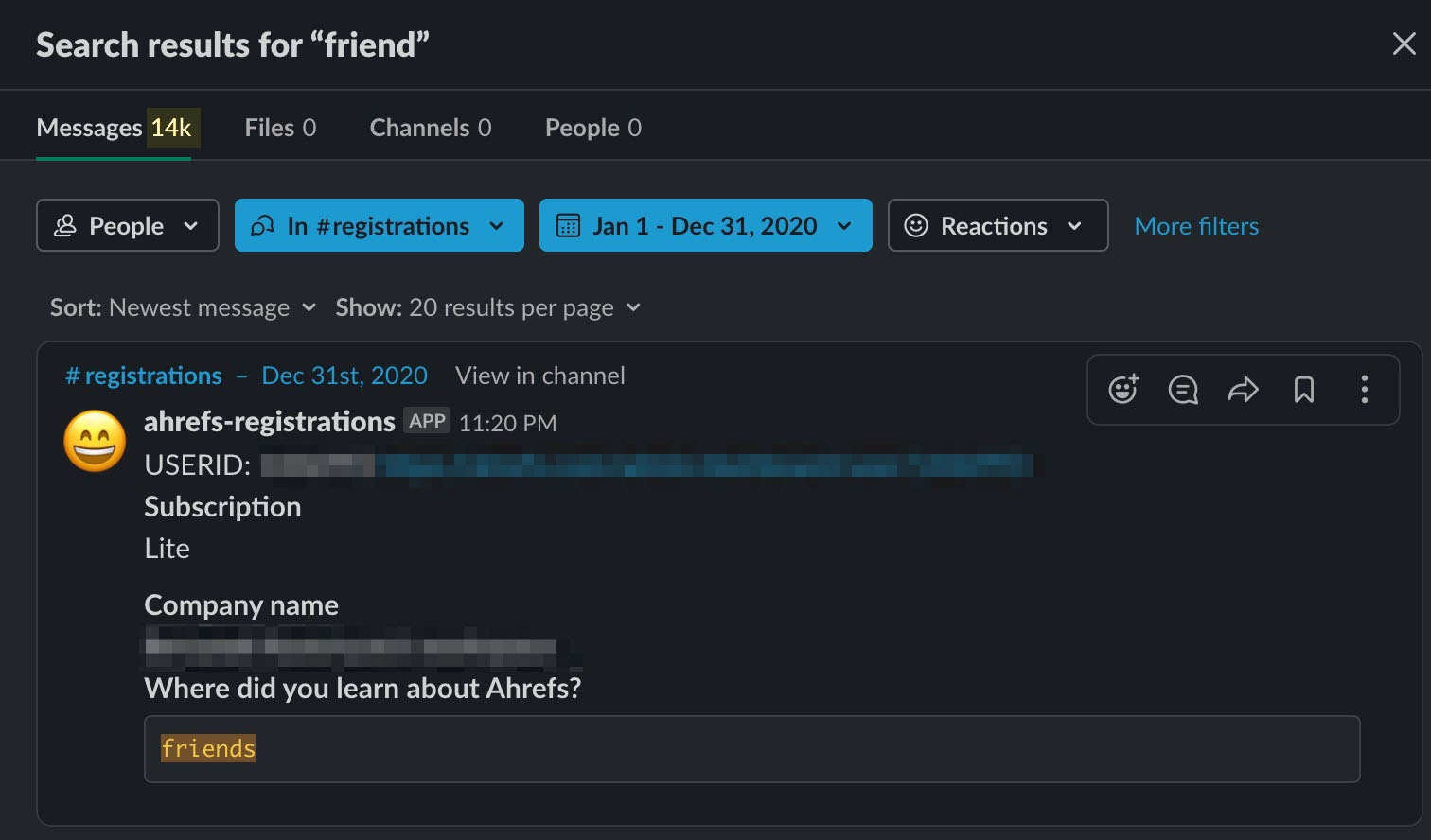
We can’t fully control it, but trying to incentivize and influence people to bring up Ahrefs in their discussions clearly has vast benefits. This process is known as word-of-mouth marketing.
Research from Nielsen shows that 83% of people trust recommendations from friends and family. It’s simply the most trustworthy and authentic marketing channel. No matter how great your marketing communication is, you can’t beat it.
The number one thing that nudges people to talk positively about a particular brand is a superb customer experience. Most of it consists of having a great product, but the entire buying process and customer service can’t be neglected. Only when you have these will proper marketing communication make it all work effectively:
In essence, word-of-mouth marketing is about properly managing your brand, communication, and product marketing once you have a product people love. To be more specific, here are four tactics to consider using:
- Make your product a natural part of your content – Referring back to the “espresso equipment” example, listing some of the products you sell for topics like “how to tamp espresso” or “espresso distribution” provides value to the reader.
- Create and distribute educational content – This helps your customers use your products better.
- Encourage customers to create and share content around your product – Here, we’re talking about social media posts, articles, photos, videos, etc. Think creative campaigns, affiliate marketing, or community hashtags. This brings us to…
- Build an engaged community within your target audience – It takes time, but it’s worth it.
On top of that, apply all suitable tactics to increase your brand awareness listed throughout this guide. Word of mouth is a by-product of improving brand awareness, leading to further increase. It’s like a flywheel.
Learn more: Word-of-Mouth Marketing: A Simple Tried & Tested Guide
People usually check the experiences of others when they’re close to making a purchase. But your brand’s visibility throughout all relevant directory listings and review platforms impacts their product choices even before they get to that stage.
For example, here are just a few of the terms the biggest software review platform, G2, ranks for in Google’s top positions:

People looking up these keywords could still be considered at the top of the funnel. They’re likely aware of some of the problems CRMs solve but are just getting into specific products and brands. Being listed among the top CRM solutions on these category landing pages has obvious benefits.
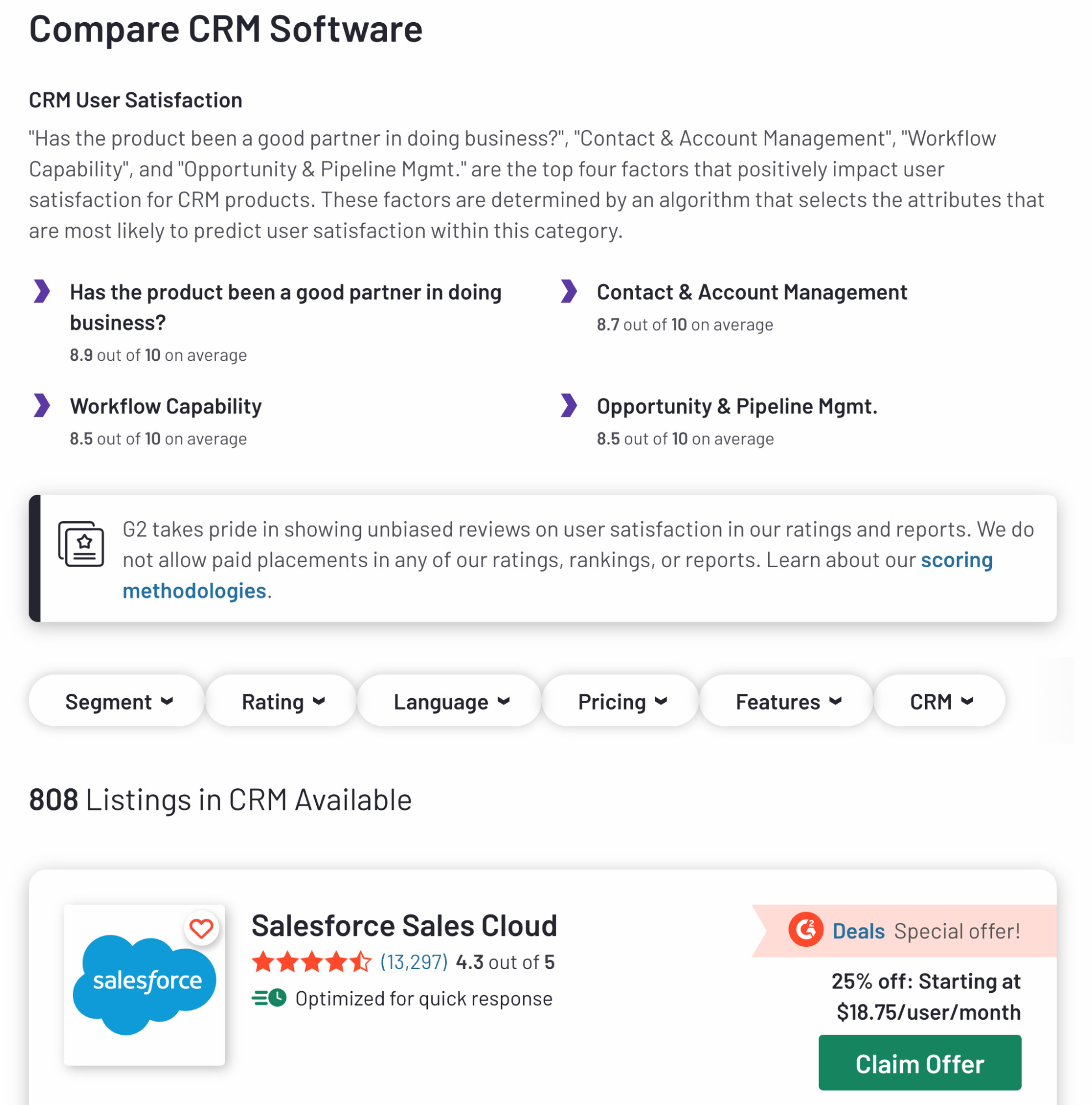
And this is far from the only page and way these platforms can showcase your brand.
For example, you can pop up on competitors’ profiles in specific sections:

Of course, getting into the top 10 among 800+ listings is naturally a challenging task. You must set up processes to gather reviews and adequately manage your online reputation. Getting a paid plan with the review platform can make things easier.
Fortunately, you can also apply these practices to many different platforms and directories. They also tend to work on similar principles because it makes sense to show the most relevant results that are the most popular:
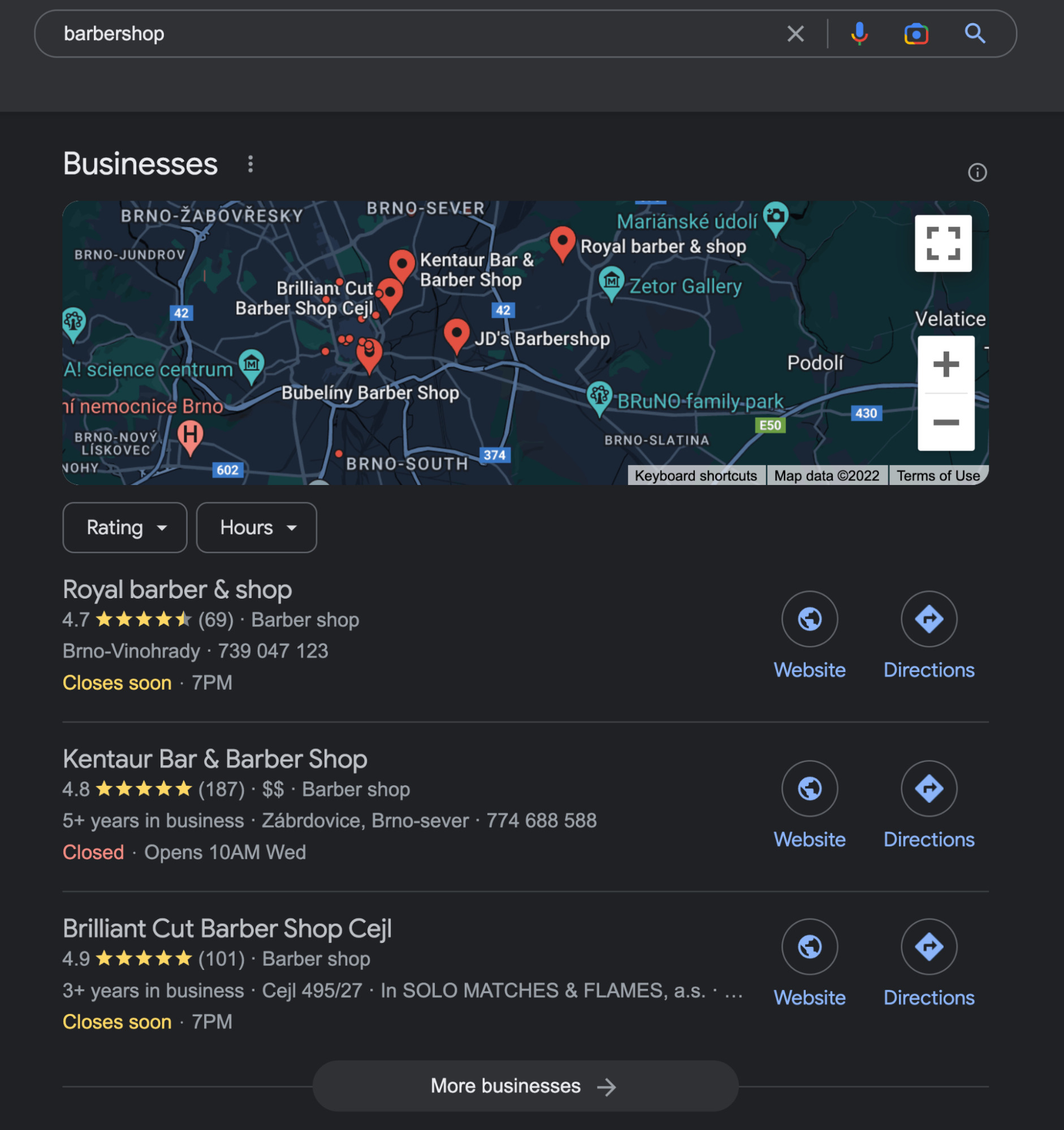
Not sure if you’ve already got a profile on every important platform? Enter your domain into Ahrefs’ Site Explorer, go to the Link Intersect tool, and fill in as many competitors as possible (the Organic competitors report can help with that).
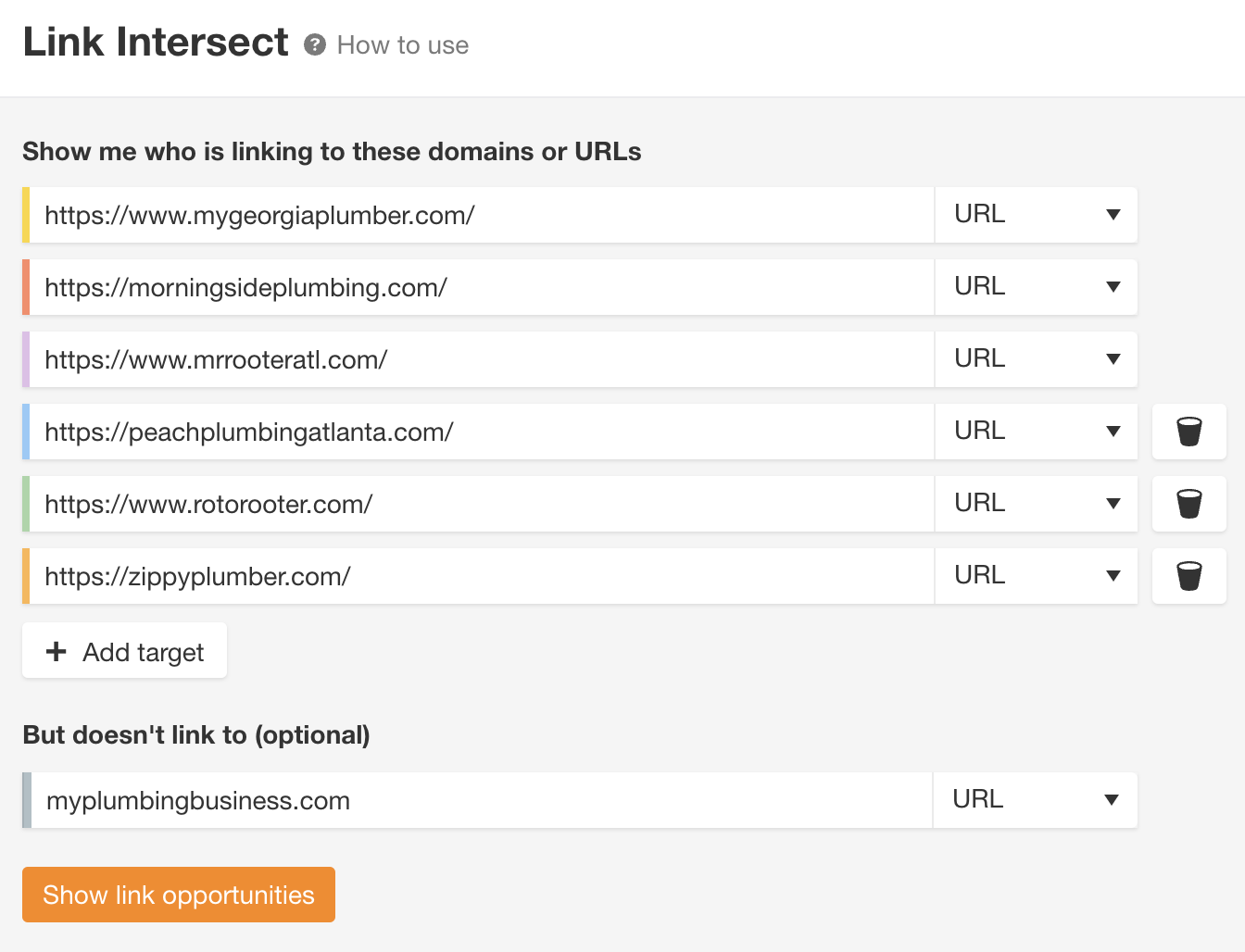
You’ll get a list of websites that link to your competitors but not you. Play around with the number of intersections and filters and try to spot the directories:
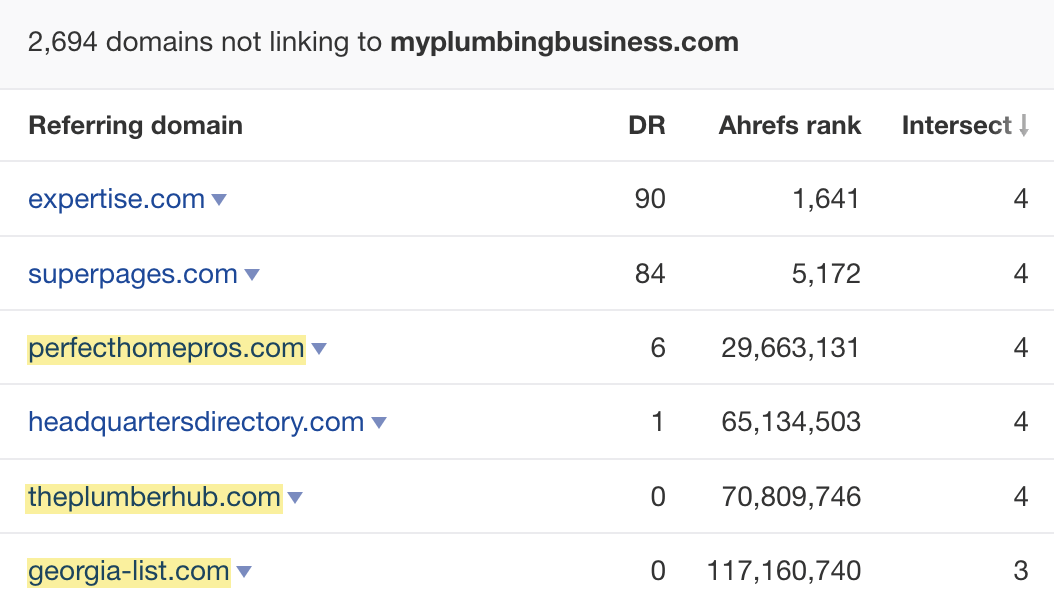
PRO TIP
Once you grasp SEO and online reputation management, you can dive into entity SEO. This is where you optimize how Google perceives your brand and products to (hopefully) become an entity in Google’s Knowledge Graph.
This can significantly impact your branded searches as you get more estate on the SERPs. And similarly to the platforms listed above, you’ll also be present in sections like “related searches”:
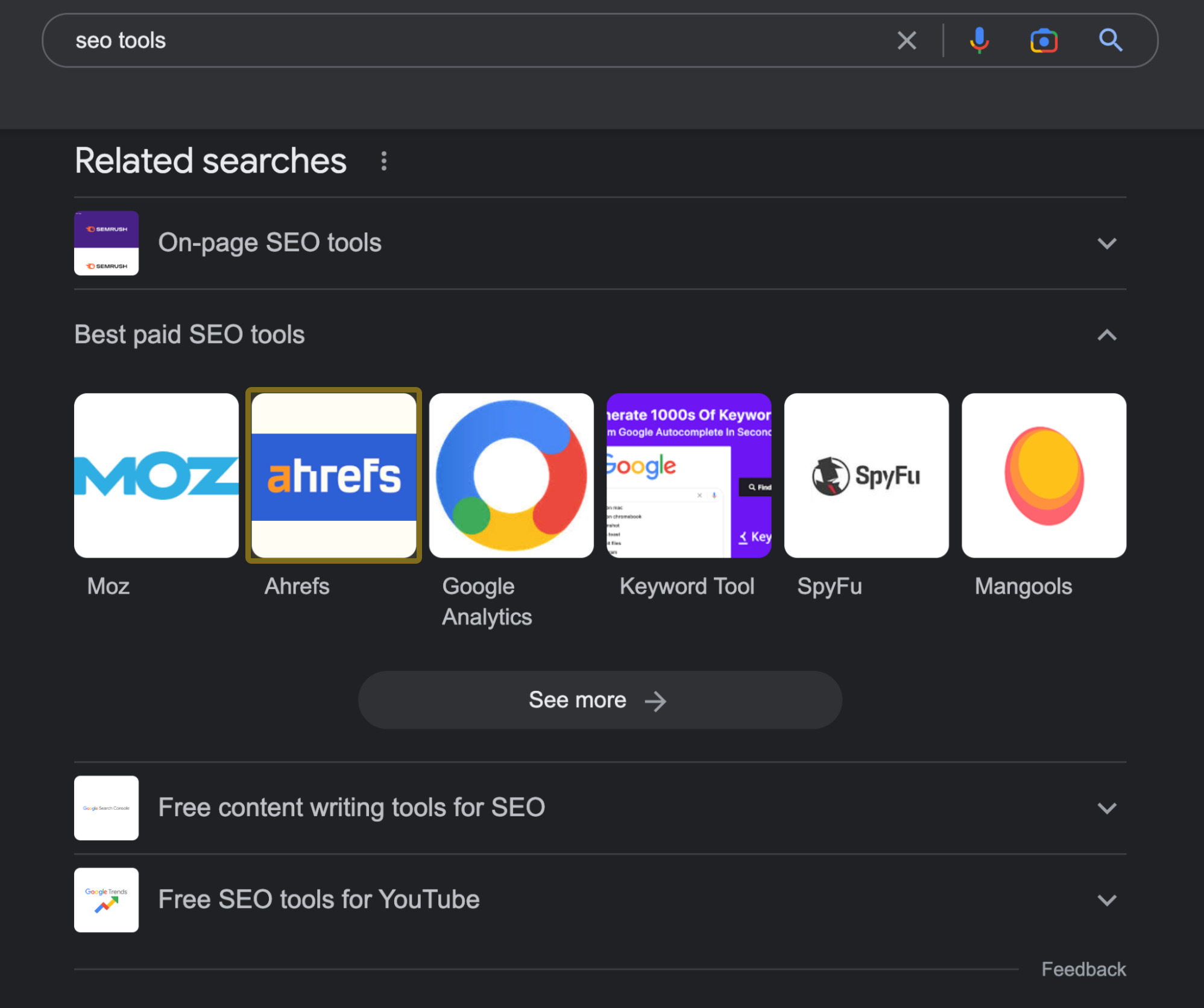
I’ve attended many marketing and SEO events over the years. If there’s a speaker with a talk that excites me, then it’s easy to get into my head. I sometimes even try to learn more about the speaker and their company.
Others may not do the same. But one thing is for sure—people prefer engaging with other people, not brands. Speaking at events and encouraging your colleagues to do the same have many benefits:
- It increases awareness from both marketing and employer branding perspectives.
- It increases employee retention and satisfaction from building their own personal brands.
- It helps you become an authority in your niche.
- It helps you build more personalized relationships with your current and potential customers.
- It can often trigger social media mentions, event reports, mentions in articles, etc.
At Ahrefs, we have many people across different teams and countries speaking and networking at events. We try to reap all the benefits listed above.

If you’re starting from scratch here, it’s better to test the waters at smaller, local events. You’ll need a solid speaking portfolio or something extraordinary to share to land a gig on the biggest stages anyway.
First, discover topics and styles that resonate with your audience. Forget sales pitches and try to provide as much value as possible. Listen to the audience’s feedback.
Second, take your time before hitting bigger stages. Practicing, getting good references, and building confidence are key things to getting there. I still get the jittery feeling even though it’s been a few years since I first spoke in front of 100+ people. A certain level of stress and anxiety apparently never goes away, no matter how experienced you are.
And last but not least, you’ll start getting a lot of speaking invitations once you get on the right path. Be ruthless with choosing the right events. Ask past participants for references. Make sure it has value for you and your company.
A big chunk of our marketing budget goes toward sponsoring podcasts, events, and newsletters.
You may have noticed our huge logo in the last image. We’re trying to squeeze the most out of the biggest SEO conference by being the main sponsor, speaking on the main stage, and having a big booth there:
Events aside, here’s what our sponsorship looks like in newsletters:
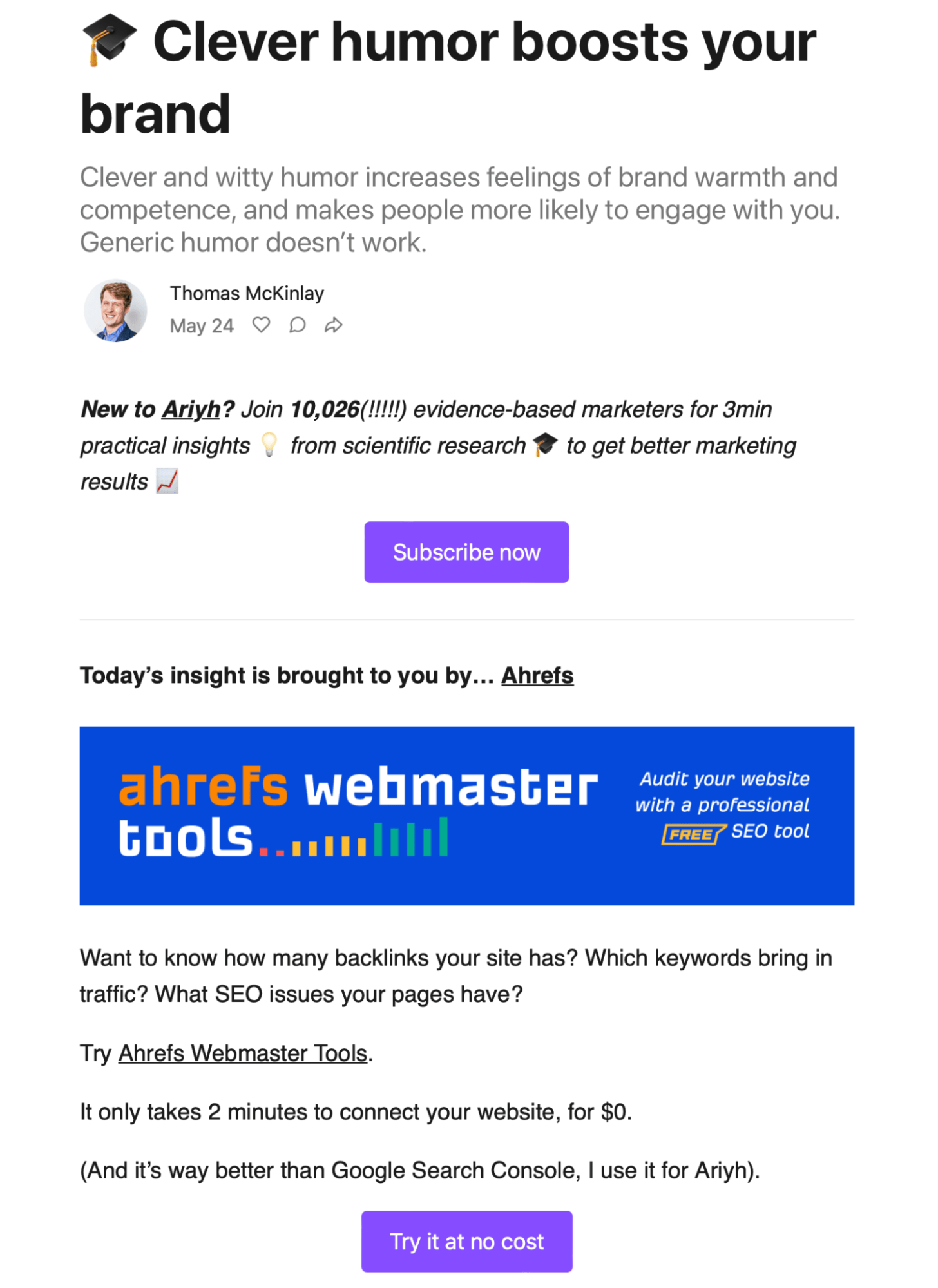
You can even go with the more traditional approach of sponsoring events for the masses. It all depends on your product, positioning, audience, and budget. Anything from local football matches to the Super Bowl can work.
Learn more: Podcast Advertising: $51,975 Spent. Here’s What We Learned
A brand ambassador is anyone who’s regularly in the spotlight representing a company. This is often an employee with the power to influence the community, but you can form these long-term partnerships with anyone. You probably follow influencers who’ve been promoting certain products for years.
For example, at Ahrefs, we have Patrick Stox as our brand ambassador:

And then we have many customers keen to recommend our products to others. Some of them evolve from fans influencing word of mouth to brand ambassadors via sponsorships:

See how this intertwines with some of the tactics we’ve already gone through?
Go through your customer database and try to spot influential people in your niche. Check communication history, whether they already mentioned you somewhere, and then create a shortlist of the best candidates for this.
Of course, the prerequisite is to have a superb product. You can pay some influencers to promote basically anything, but many people can spot dishonest recommendations from miles away. And yes, even ketchup can be apparently a superb product:
To sum it up, influencer marketing should be in your arsenal, and using brand ambassadors is an excellent approach to this.
Some brands share values and common traits among their audiences. Joining forces to appeal to both customer bases can work across niches for win-win campaigns.
The easiest way to get started with this is by co-creating content. Here’s an example of me doing a webinar with Kontent, which is a headless CMS:
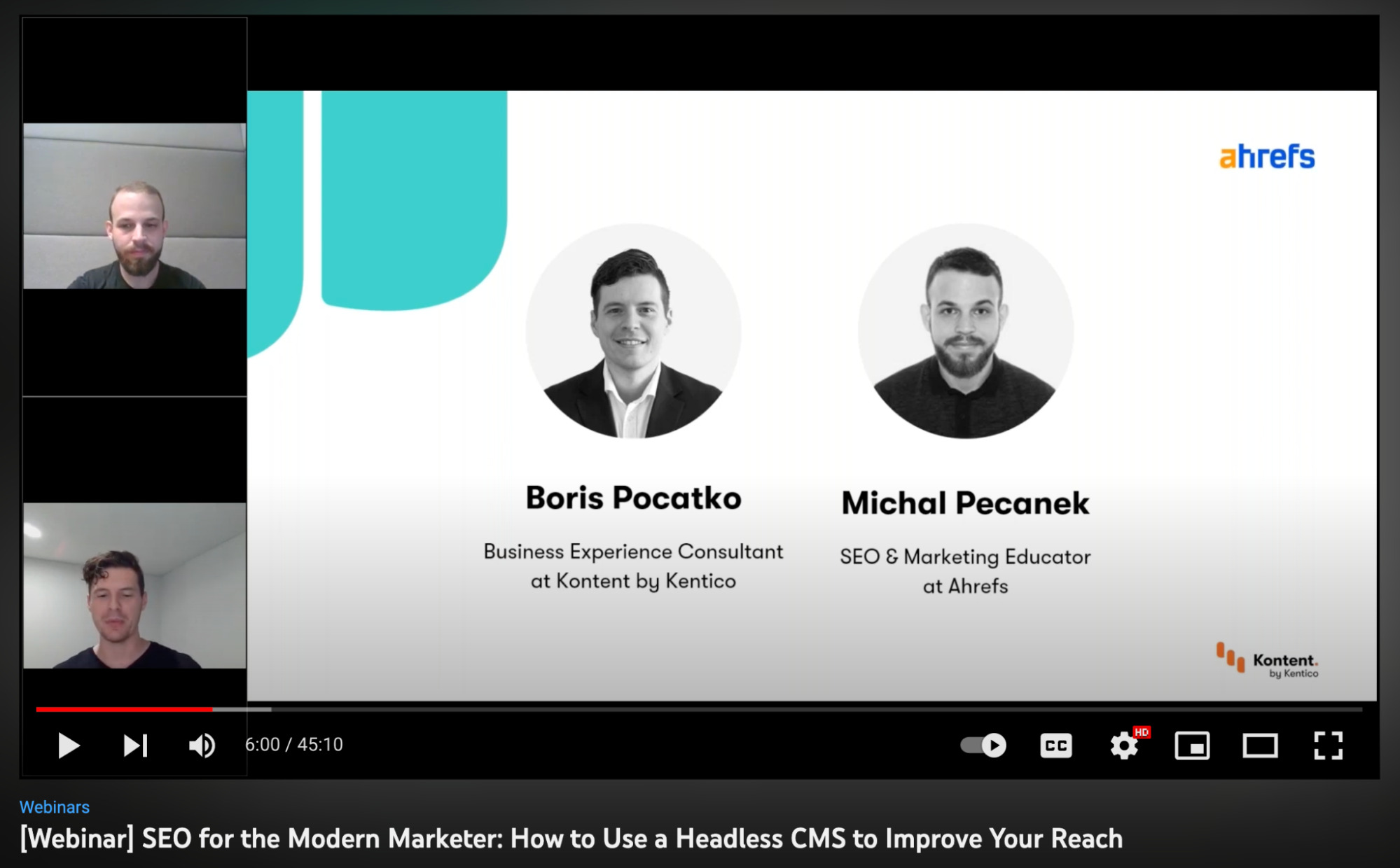
Ahrefs is the authority in SEO the Kontent team needs for this topic. Kontent’s audience consists of potential enterprise-level leads for us where 45 minutes of brand and product exposure has great value. It’s a win-win.
That said, the most impactful co-branding campaigns for brand awareness are co-branded products.
The best example of a successful co-branded product I can recall from the past few years is a MoonSwatch:
At the time of writing, MoonSwatches are still widely unavailable eight months after their release. People who wouldn’t buy an Omega stood in long lines together with wealthy watch fans who’d likely never wear a regular Swatch on their wrists.
In this case, both brands are owned by the same company. But chances are you don’t have a portfolio of complementary brands at your disposal. So here are two main methods of discovering the right brands to partner with.
The first is to enhance your market research data with other products your customers and audience like using.
The second is to use an audience insights tool like SparkToro. It will show you social media accounts and websites that your audience also follows and visits:
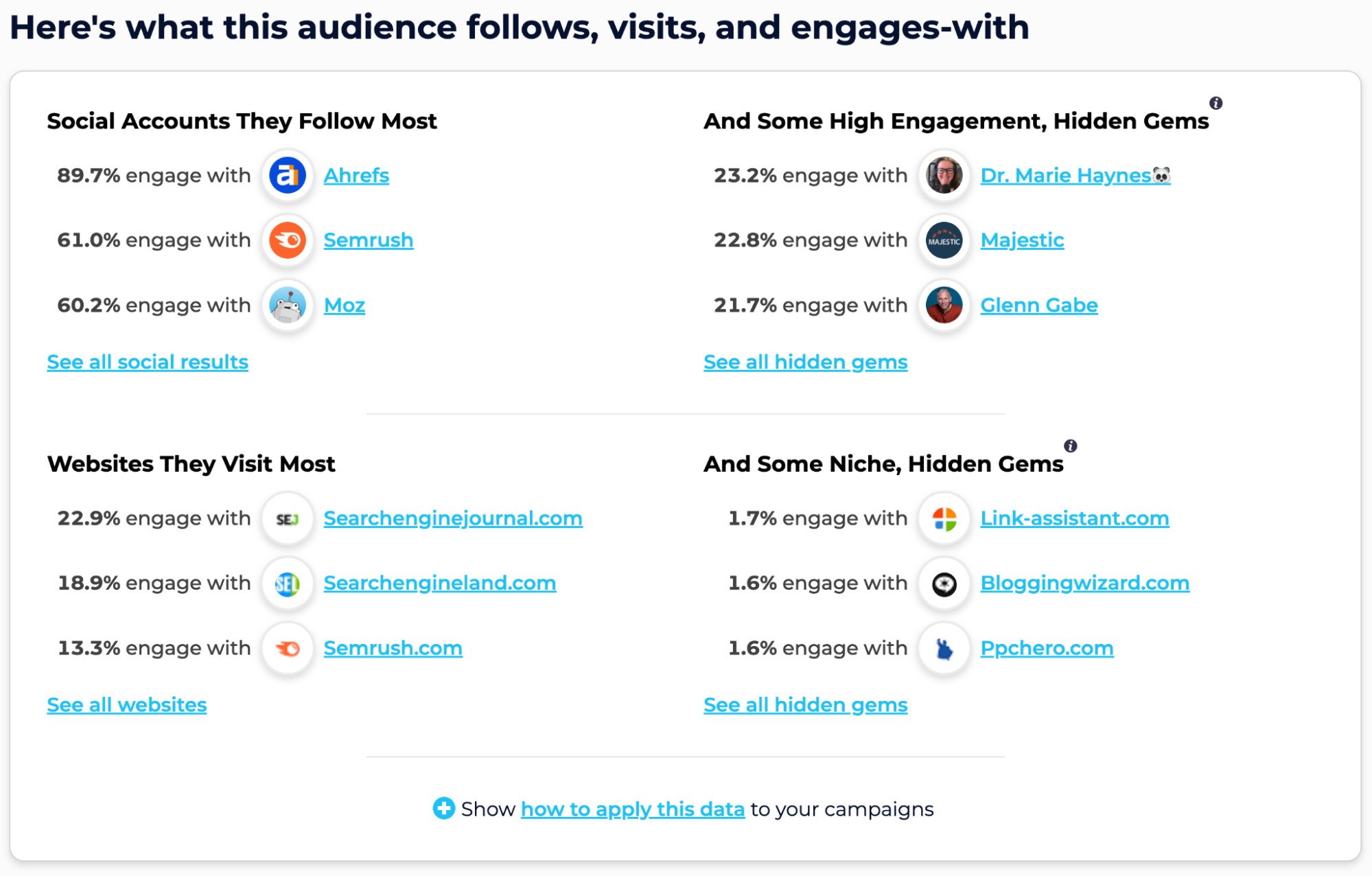
Simply filter out your competitors and see if any remaining companies fit the bill.
Learn more: For Omega and Swatch, the Rewards of Co-branding Could Be Astronomical
I saved the most tried and tested tactic for increasing brand awareness for last.
Ads in mass media have been with us forever. TV ad spending in North America alone was $64.7 billion in 2021. And countless studies and data support that mass media advertising works.
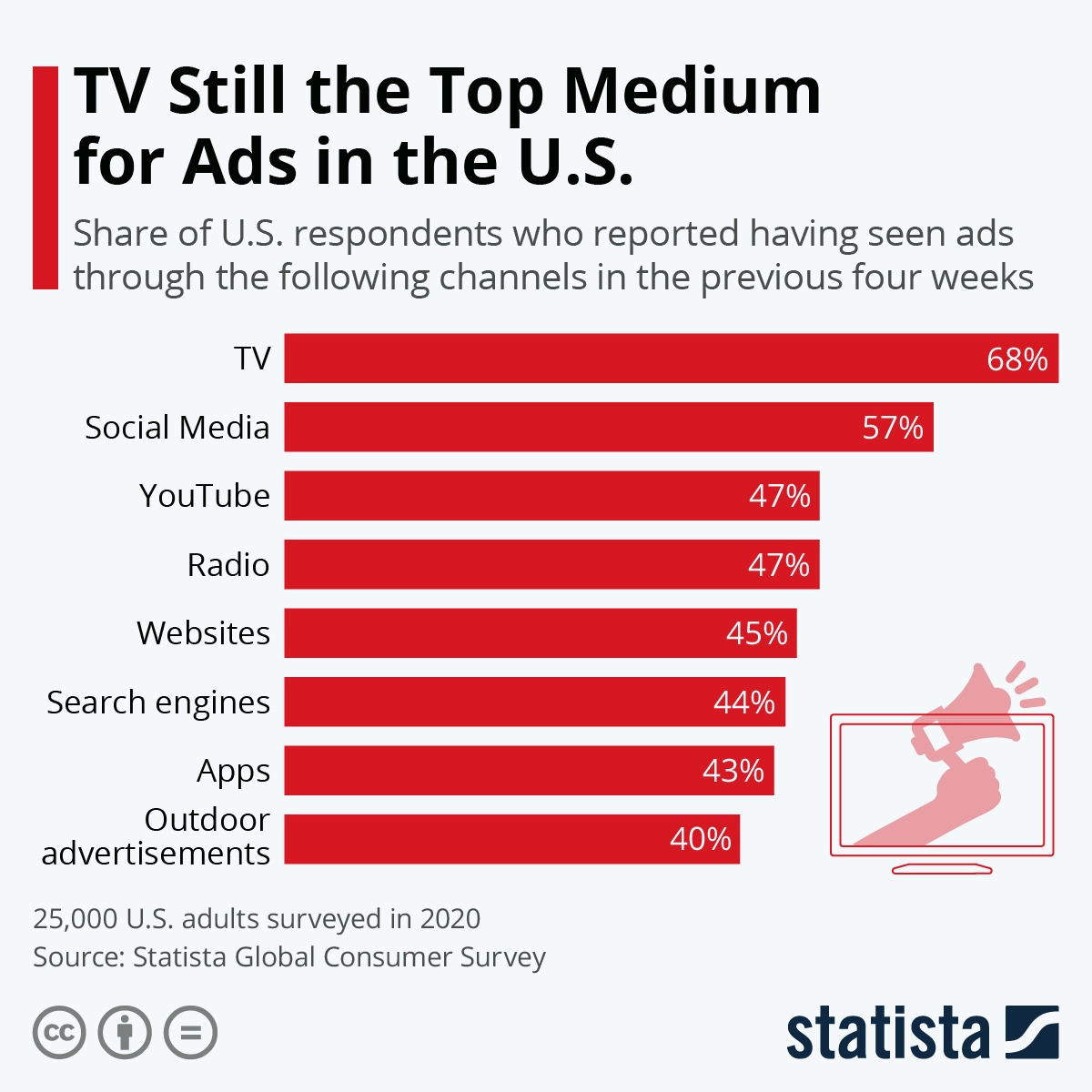
Of course, don’t go and spend 90% of your marketing budget to run national TV ads if you’re a B2B startup. But even smaller companies with very specific target audiences can use mass media properly.
All mass media channels, except TV, can be used to target a specific audience. Most of it comes from location targeting. If your target segment is tech companies, you can, for example, buy a few billboards in technological hubs.
Here are two notable examples from Silicon Valley:
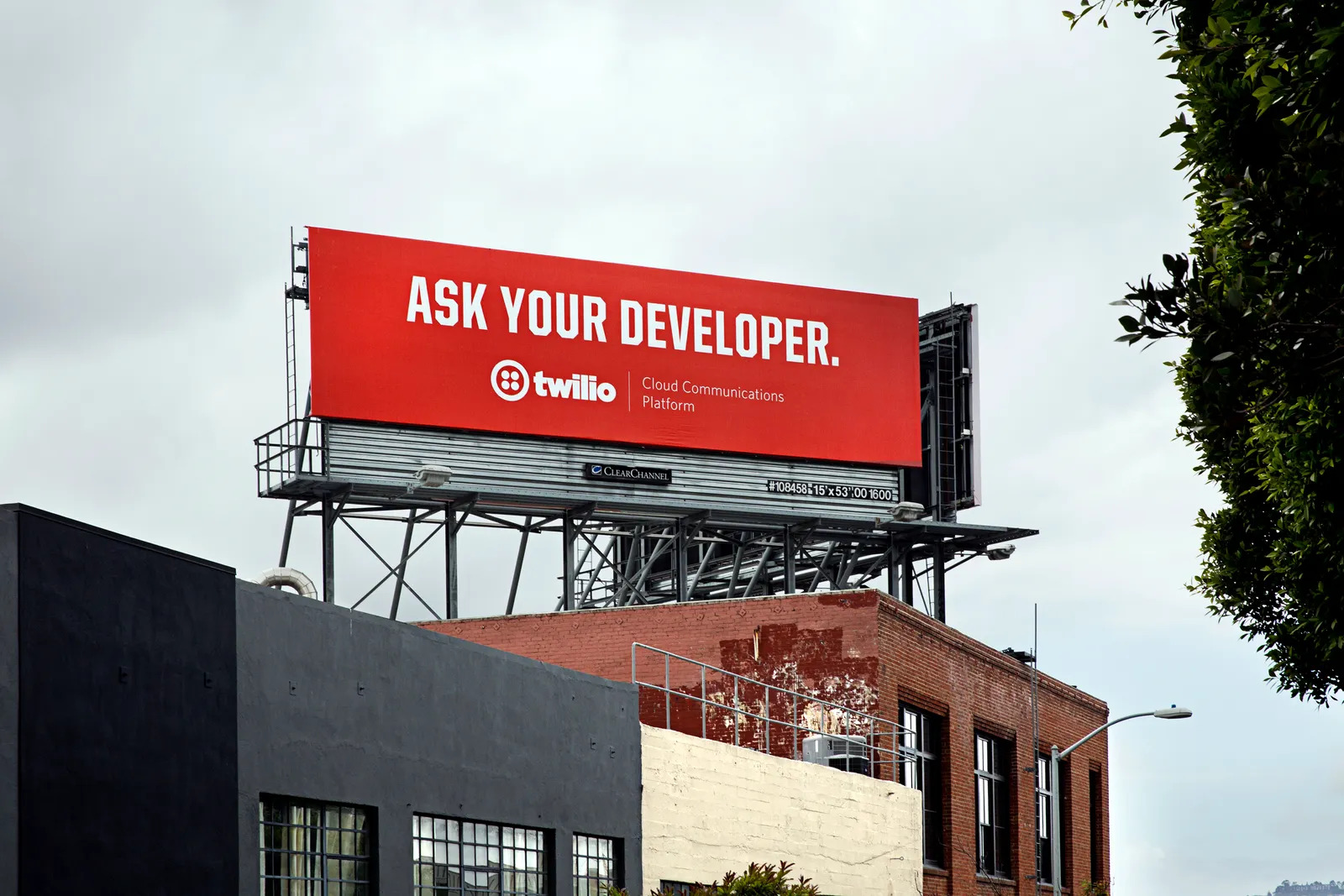
These may be closer to PR stunts, but you get the gist. You can also buy ads on local radios, newspapers, airports frequently visited by your target audience, etc.
Final thoughts
Increasing brand awareness is one of the end goals of brand management. It’s a whole marketing discipline, so we barely touched the surface here and covered just the last mile.
The tactics you choose to increase your brand awareness should always stem from a proper marketing strategy. Its components regarding brand management include:
- Appealing to your target audience with a brand’s positioning (the way they should perceive your brand and products).
- Developing and consistently using multiple brand assets (logos, specific colors, fonts, slogans, mascots, etc.) in your communications to make your brand stand out and easy to recognize.
- Committing a significant portion of your marketing budget and resources to brand-building activities.
- Setting strategic objectives, including a proper way to measure progress.
Take this as a quick introduction to topics related to the effectiveness of brand awareness campaigns. Remember: the sooner you start executing, the better. You can always polish the processes later. I’ll leave you with a few resources that will help you do that:
Got any questions? Ping me on Twitter.



















You must be logged in to post a comment Login